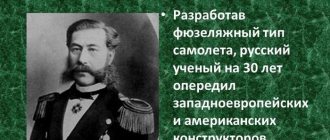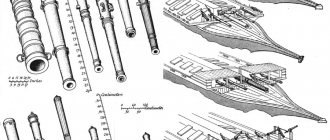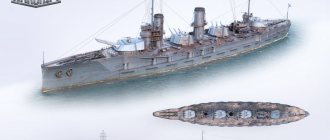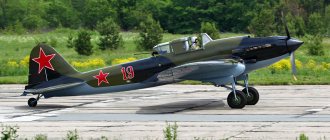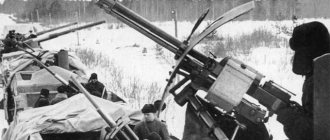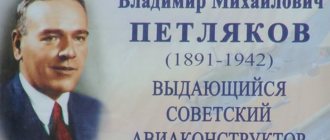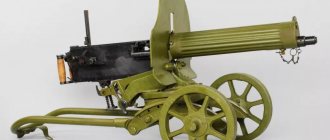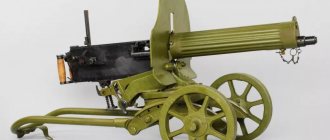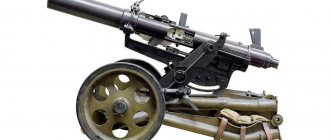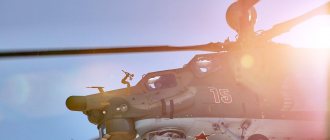Alexander Fedorovich Mozhaisky (1825-1890) - Russian military leader, rear admiral, inventor - aviation pioneer. Designed and built the first in Russia and one of the first full-scale aircraft in the world. Some sources reported that during the test, Mozhaisky's plane was able to take off from the ground.
There are many interesting facts in Mozhaisky’s biography, which we will discuss in this article.
So, here is a short biography of Alexander Mozhaisky.
Service and expeditions
During the biography period 1842-1849. Mozhaisky was on voyages on various ships in the Baltic and White Seas. By that time he had already been promoted to lieutenant. In 1853, he became part of the Kronstadt-Japan naval expedition, which lasted about 2 years.
Later, Alexander Mozhaisky was entrusted with leading the 10-gun ship Dvina. In the mid-1850s he continued to serve in the Baltic Fleet. An interesting fact is that he sailed with the royal family, including Emperor Alexander II and his wife Maria Alexandrovna.
In 1858 Mozhaisky took part in the Khiva expedition. He was the first to describe the waters of the Aral Sea and the Amu Darya River, for which he was awarded the Order of St. Vladimir, 4th degree.
Returning home, Alexander Fedorovich became the senior officer of the battleship "Eagle". Through rather harsh and cruel measures, he managed to achieve high training and discipline among the crew members. In the fall of 1859, he was promoted to the rank of lieutenant commander.
From 1862 to 1872 Mozhaisky was in the civil service. At this time in his biography, he participated in the First All-Russian Ethnographic Exhibition as a representative of the Vologda province. In 1868, he continued to serve in the St. Petersburg Northern Shipping Company.
It is curious that Alexander participated in the development and construction of sea rescue stations, for which he received gratitude from the tsar. About a year later he became a member of the Odessa “Russian Society of Shipping and Trade”.
In 1873, a man took the post of justice of the peace in the Podolsk province, working in this position for about 3 years. He then returned to St. Petersburg, where he began to take a keen interest in aviation. In 1879, he was again called up for military service with the rank of captain 1st rank.
After 3 years, Mozhaisky was awarded another rank - major general with dismissal from service. In subsequent years of his biography, he was listed as a rear admiral. Having retired from military affairs, he decided to engage in aircraft manufacturing.
Last years
- In 1879, Alexander Fedorovich again entered military service, and began to lecture on maritime practice in the capital's Naval Cadet Corps .
- In 1881, at the Department of Trade, Mozhaisky received a privilege for his invention , which gave the right to use it for commercial purposes. In the same year, he ordered two 20 horsepower steam engines from England, which were manufactured according to his drawings.
- The inventor assembled the aircraft in a field near Krasnoye Selo, and it was built in 1882 . Pre-flight experiments continued until 1884, but history has not preserved reliable information about whether Mozhaisky managed to lift the aircraft into the air.
- In 1885, he placed an order at the Obukhov plant in St. Petersburg for the production of two more powerful engines . However, for various reasons, work proceeded very slowly, and the engines were ready only in 1890.
- On March 20, 1890, Mozhaisky died of pneumonia and was buried at the Smolensk cemetery in St. Petersburg.
- The new engines were never installed on the aircraft and burned out during a fire at the Baltic Shipyard warehouse, where they were transported along with the old engines. The fate of the aircraft itself is unknown; according to one version, it was sold at auction.
Alexander Mozhaisky (painting 1882)
Aviation
According to a number of biographers, Mozhaisky’s experiments in the field of aviation increased hostility towards him on the part of the peasants. Illiterate peasants believed that the admiral was connected with evil spirits, which supposedly “carried him through the air in a trough.”
It is curious that when the village girls met Alexander on their way, they covered their faces with their palms, fearing the evil eye. However, Mozhaisky continued to conduct experiments, looking for different ways to increase lift.
It is worth noting that 20 years earlier, the scientist carefully observed birds, their body structure and other features. As a result, he began to study the anatomy of different birds: for each of them a card was written, which indicated the height of the bird's flight, its geometric proportions and mass.
Mozhaisky's plane
Initially, Mozhaisky designed kites of various configurations. When making kites, he used bird feathers, and later rabbit skins. In the late 1870s, some publications reported that he managed to build a kite that, when towed by horse traction, could lift a person.
The article also said that Alexander Mozhaisky made 2 or 3 flights on this snake glider. It should be noted that according to eyewitnesses, the flight altitude was about 2 m above the ground. In subsequent years of his scientific biography, he continued to improve his aircraft.
The scientist equipped them with various primitive engines, and also conducted experiments using a special aerodynamic cart. With its help, he measured the level of lift and drag of his aircraft.
"Rider"
Despite resistance to everything new, the pillars of Russian navigation recognized the advantage of steam engines. A decision was made to build the first steam screw clipper, the Horseman, at the Finnish Björneborg shipyards. It fell to Alexander Fedorovich Mozhaisky to manage the construction. The choice was not accidental; his experience on the Gremyashchy, excellent organizational skills, and engineering knowledge played a role. In the summer of 1860, Mozhaisky began work. He had a hard time, because, in addition to management, he had to train the workers, because no one except him was familiar with the structure of steam engines. Thanks to his talent, in just a year the ship was ready and successfully passed all tests.
Mozhaisky's plane
In 1876, Alexander Fedorovich came to St. Petersburg, where he presented his design for an aircraft at the War Ministry. His findings interested the members of the commission, as a result of which he was allocated 3,000 rubles to continue conducting experiments.
A couple of years later, Mozhaisky came to the conclusion that in order to obtain reliable data and solve a number of issues, it was necessary to produce a larger apparatus - a full-scale aircraft that could be controlled by a person. According to his calculations, the construction of such a machine required approximately 19,000 rubles.
Painting of a pilot Mozhaisky's plane taking off
The Commission resolutely refused to finance this project. However, Alexander Mozhaisky did not give up, starting the construction of a full-scale aircraft using his own savings. At the same time, some wealthy individuals provided him with financial support.
Unfortunately, no documents regarding the tests of Mozhaisky’s aircraft have survived to this day. Many articles published after the admiral’s death stated that the aircraft crashed on takeoff.
At the same time, some sources reported that Mozhaisky’s plane was able to separate from the ground for a short time. After the tests, the designer began repairing and improving his car by increasing the power of the power plant.
However, due to an acute shortage of money, Alexander Mozhaisky did not have time to do this before his death in 1890. After his death, the admiral’s sons offered the Russian authorities to buy their father’s plane, but they refused. The further fate of this car is not exactly known.
From model to aircraft
- The airplane models made by the inventor could fly, but to conduct full-scale experiments, considerable funds .
- Having decided to promote the project, in 1876 Mozhaisky moved to St. Petersburg and wrote a letter to the Main Engineering Directorate, in which he asked for assistance.
- In 1877, a commission was appointed to study his invention, which decided to give Alexander Fedorovich 3,000 rubles for further research.
- Money from the royal treasury was not allocated in full, so Mozhaisky had to use his very meager funds for experiments. By 1878, he had completed the drawings of the aircraft. However, the new commission, having studied the documentation provided by the inventor, recognized the invention as useless and did not allocate new funds.
Alexander Mozhaisky (portrait)
Mendeleev's opponent
His plane was revealed to the astonished world at the end of 1876. There were also successful flights of the model (or models), which instilled great confidence in the inventor. As St. Petersburg Vedomosti wrote, he was “convinced that in a short time he would give the public the opportunity to fly in the air, incurring less risk than when riding on railways and stagecoaches.”
But even the brilliant Dmitry Mendeleev did not understand his persistence.
During the occupation, Poddubny walked around with a Soviet order on his chest
At the beginning of 1877, Alexander Mozhaisky decided to “subject his invention to the court of scientific criticism, proposing to the War Ministry to use his project for military purposes in the upcoming war with Turkey.” On January 20, 1877, by order of the Minister of War, Count Milyutin, a special commission was formed to consider Mozhaisky’s project; it included the largest representatives of Russian science and technology. Mendeleev's opinion was decisive. The commission's conclusion is damning:
“Aeronautics is and will be of two kinds: one in balloons, the other in aerodynamics (the word “airplane” had not yet been invented - E.G.). The first ones are lighter than air and float in it. The second ones are heavier than him and drown..."
It is clear that Mozhaisky was refused funding for the project. This is not a matter of envy of retrograde scientists. They could not appreciate Mozhaisky’s rise. It was just the revenge of the passing time on those who dared to live in the future.
It seems that these words of Mozhaisky are written in blood:
“I wanted to be useful to my Fatherland and began developing my project, for which I left my place of service, abandoned another, also profitable in terms of content and career... At first I lived and spent small cash, then I incurred debts, sold and mortgaged everything, that has valuable things, even watches and wedding rings, but enduring want and deprivation and not receiving what the government gives to every employee, that is, a decent salary, to which I was entitled due to my thirty-five years of useful service, due to my rank and because, that he worked not for his own personal interest, but for the benefit of the state, and acted not at his personal discretion, but at the direction of a commission appointed by the government. And only when driven to extremes, to poverty, no longer having clothes decent for an officer, I asked the government not for a reward, but for a daily piece of bread, which I did not have and which was not given to me, but at the same time, with my proven selflessness and self-sacrifice, without any reason for distrust of my words, they remained deaf to my request and also connected the question of a piece of bread for me with the opinion and assessment of my work of the commission whose actions I had the honor to explain in this regard.”
The honor of Alexander Mozhaisky could have been saved by the flight of his brainchild.
And only flight!
Memory of Mozhaisky
The name of Alexander Fedorovich continues to live. Streets and passages in many Russian cities are named in his honor. The Military Space Academy named after A. F. Mozhaisky proudly bears its name, the graduates of which are outstanding scientists, military figures and Hero of the Soviet Union M. V. Avdeev. The equation for the existence of an aircraft is named in honor of Alexander Fedorovich, and International Youth scientific and technical readings named after. Mozhaisky.
The name of the inventor was also embodied in culture - the film “Zhukovsky” contains an episode of Alexander Fedorovich testing his aircraft. The experiments of the famous inventor formed the basis of the fantastic novel “Airplanes over Mukden” by A. E. Matvienko and “The Lamps of Methuselah” by Victor Pelevin. Having devoted his life to working on the creation of the first aircraft, A.F. Mozhaisky provided the basis for future Russian design engineers. Based on his experiments, in 1913 the first domestic aircraft, the Russian Knight, was developed and constructed. His name is forever inscribed in the history of Russia.
sea soul
The historical concept, ironically called “Russia - the birthplace of elephants,” suggests that most of the great discoveries made by mankind have a “Russian trace.”
And for every Italian radio inventor Marconi in Russia there is a Popov , and for every electrical wizard Thomas Edison there is a similar Russian wizard Alexander Lodygin .
Article on the topic Stolen championship. What Russian inventions were appropriated abroad?
And the Wright brothers , the inventors of the world's first airplane. The honor of the Fatherland in this nomination is defended by the Russian inventor Alexander Fedorovich Mozhaisky .
Alexander Mozhaisky was born on March 21, 1825 in the family of a hereditary sailor, Fleet Admiral Fyodor Timofeevich Mozhaisky . Not only little Sasha’s father was connected with the fleet, but so were all the men around him. That is why choosing a career seemed a matter of course - Alexander entered the Naval Cadet Corps for training, which he graduated with honors in 1841.
What followed was a busy, interesting service in the navy, in the Baltic and White Seas. In 1853, as a senior officer of the frigate Diana, Mozhaisky took part in a long voyage along the route Kronstadt - the Far East.
In 1855, off the coast of Japan, the Diana was shipwrecked due to a tsunami resulting from a powerful earthquake.
The surviving crew, stranded in Japan, had to petition local authorities to allow them to purchase materials and hire carpenters to build a small schooner for return to their homeland.
The schooner project was created by Alexander Mozhaisky. Having successfully built the ship, the Russian sailors were able to return to their homeland.
12 seconds of sky. How the Wright brothers taught people to fly
Read more
